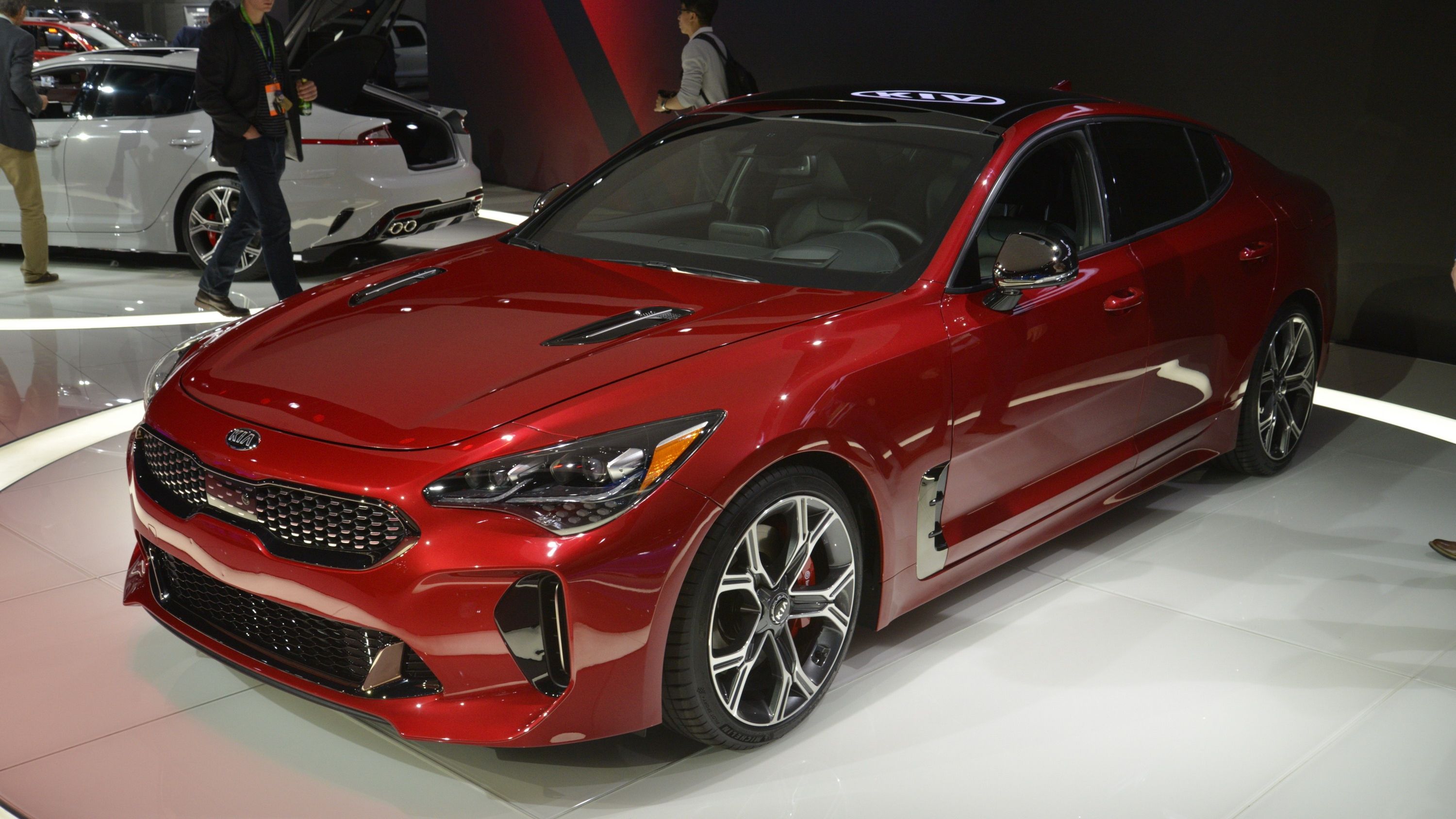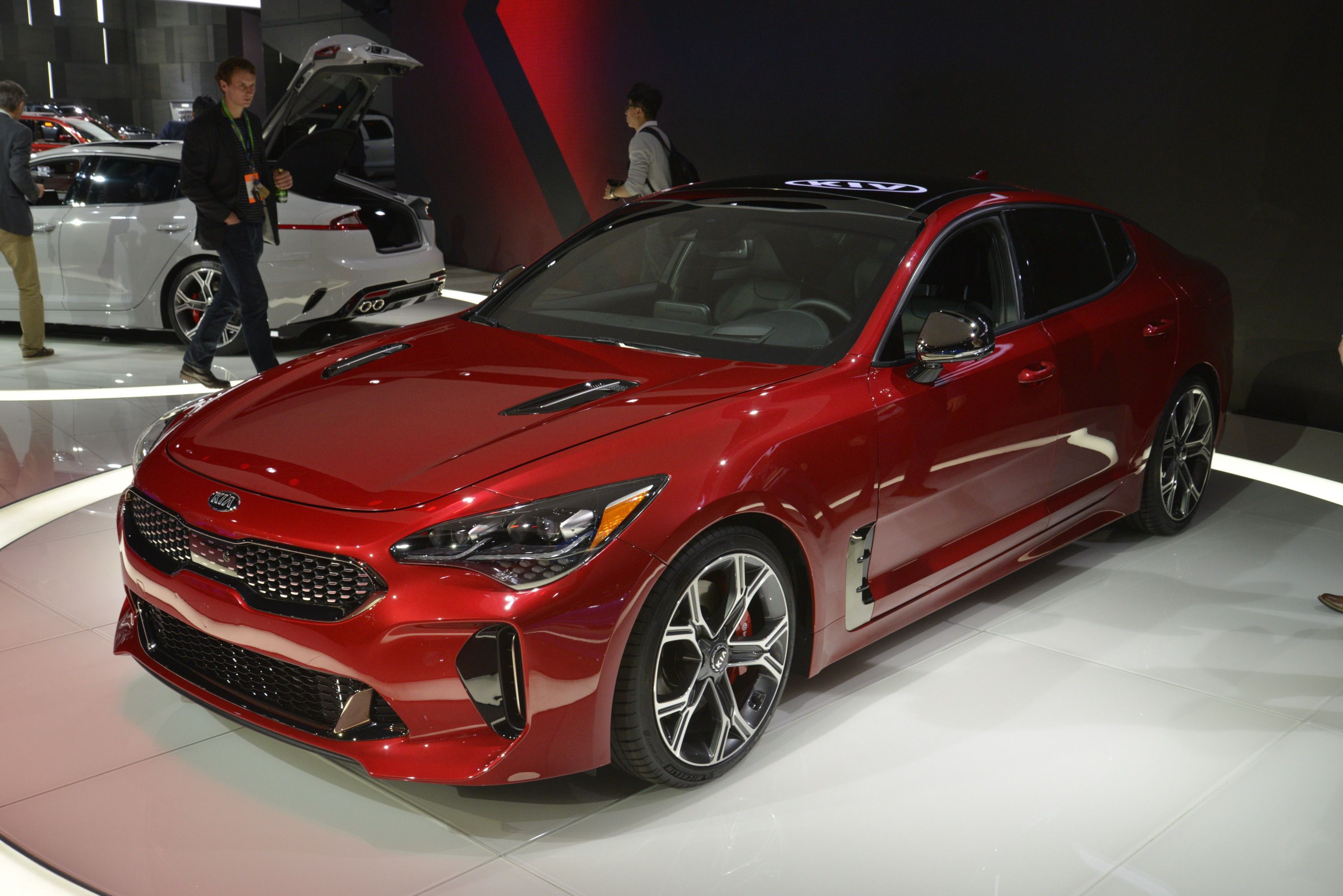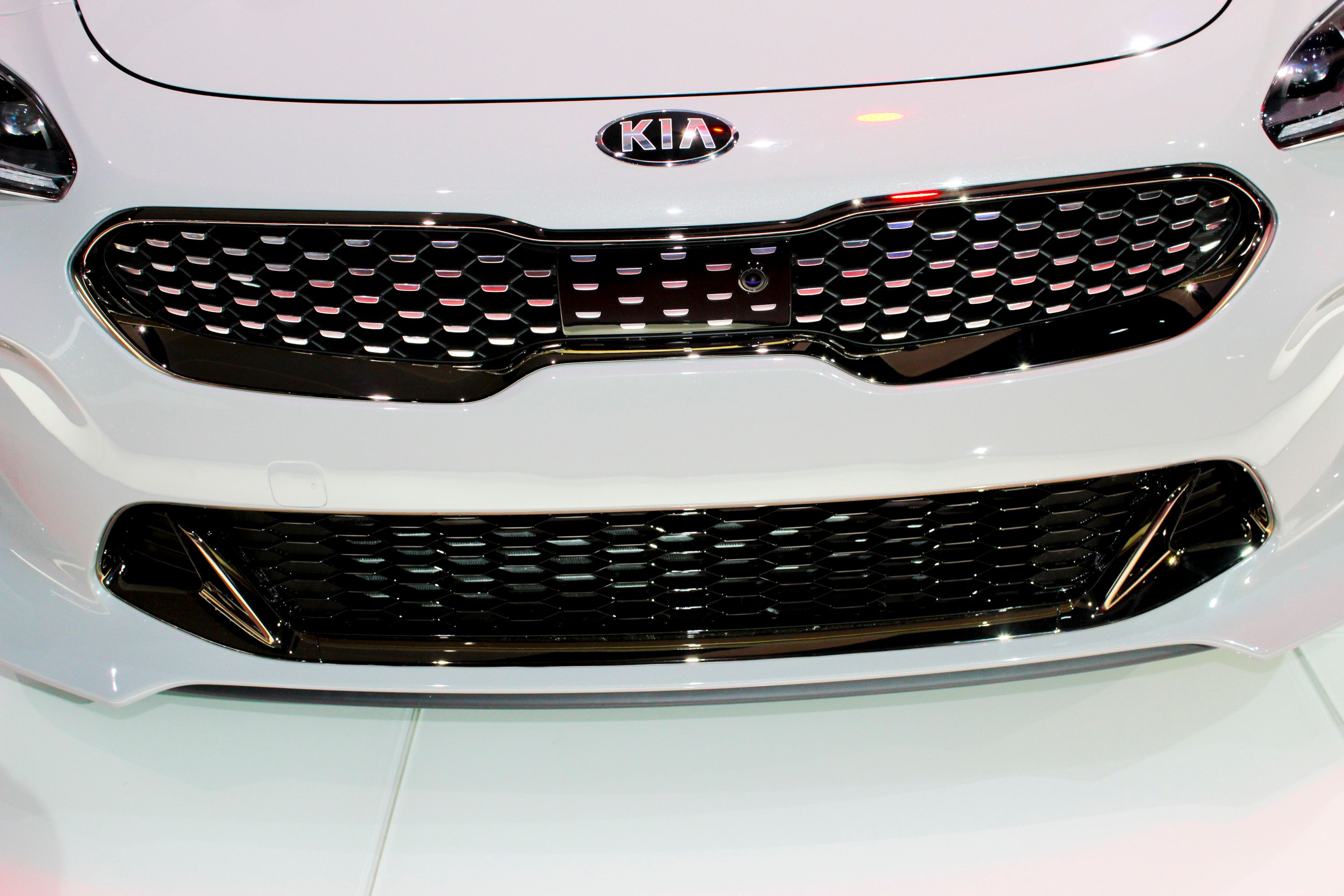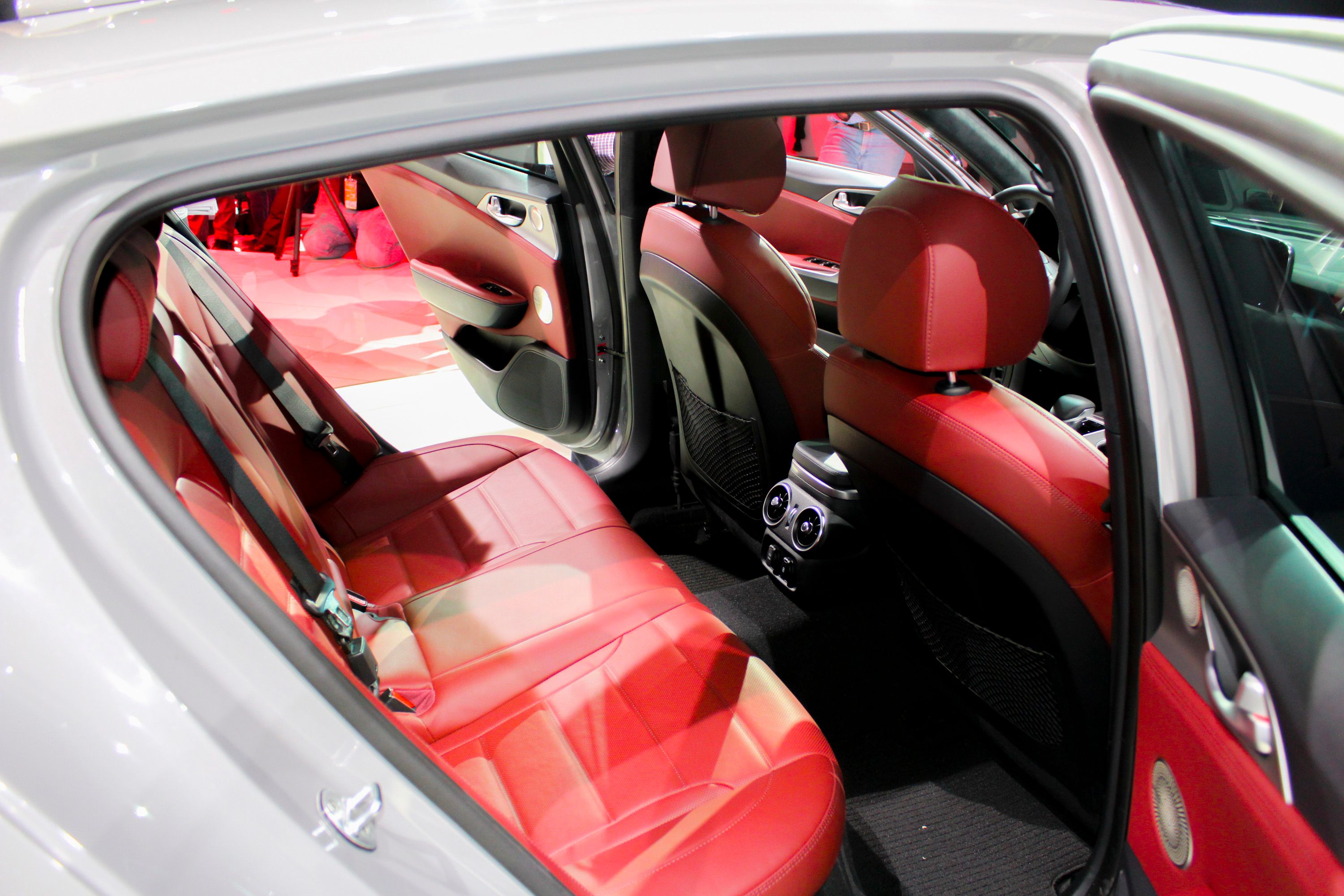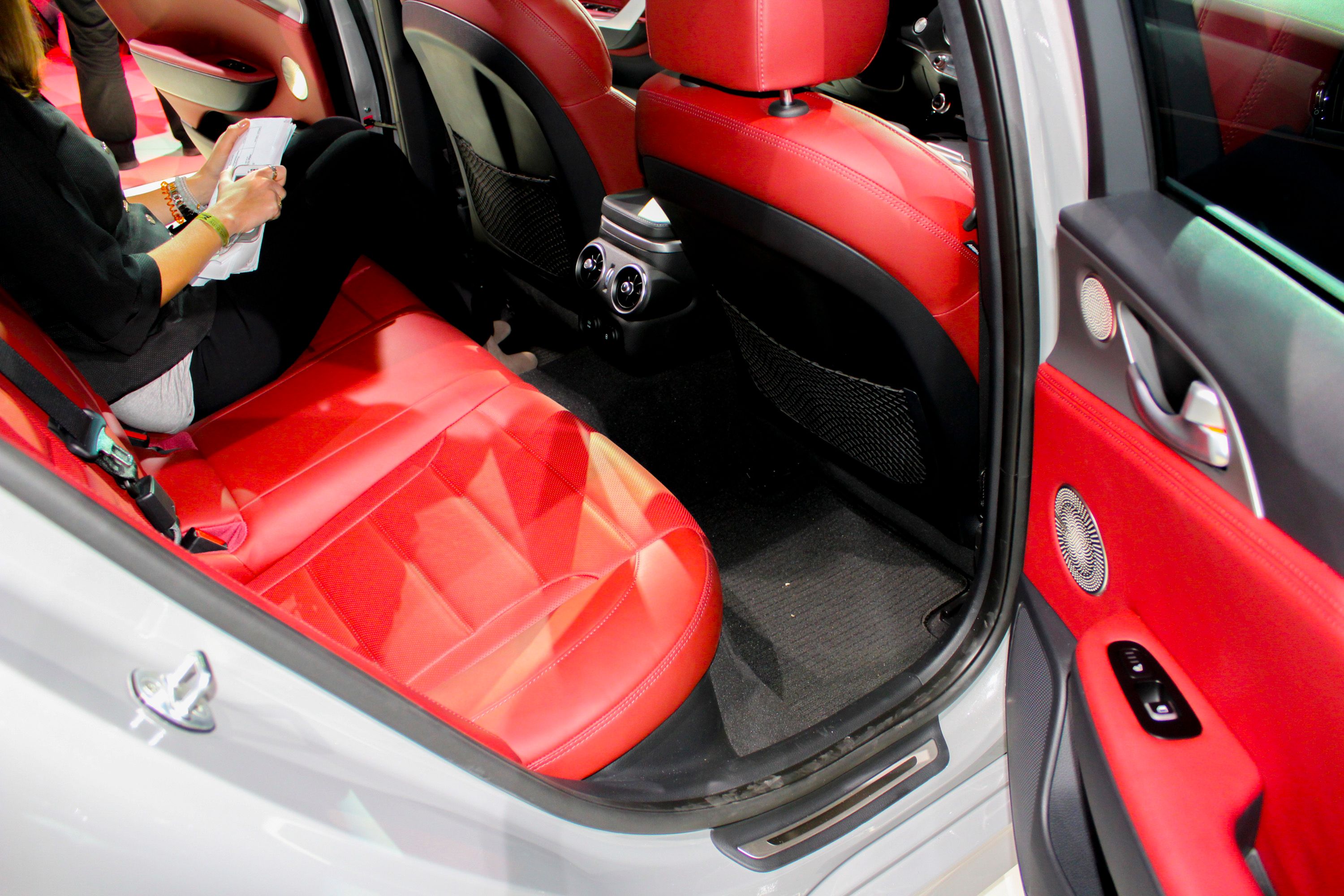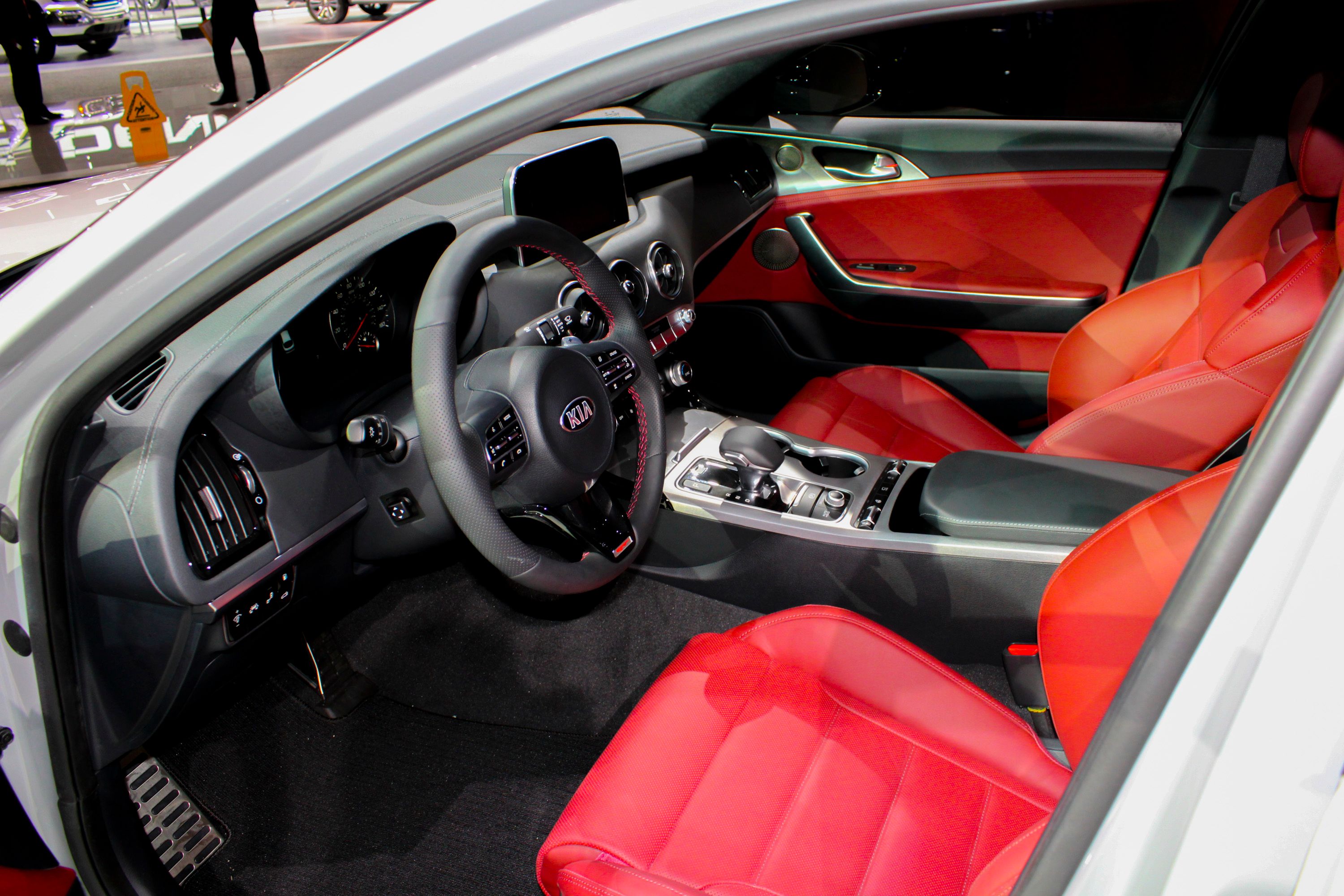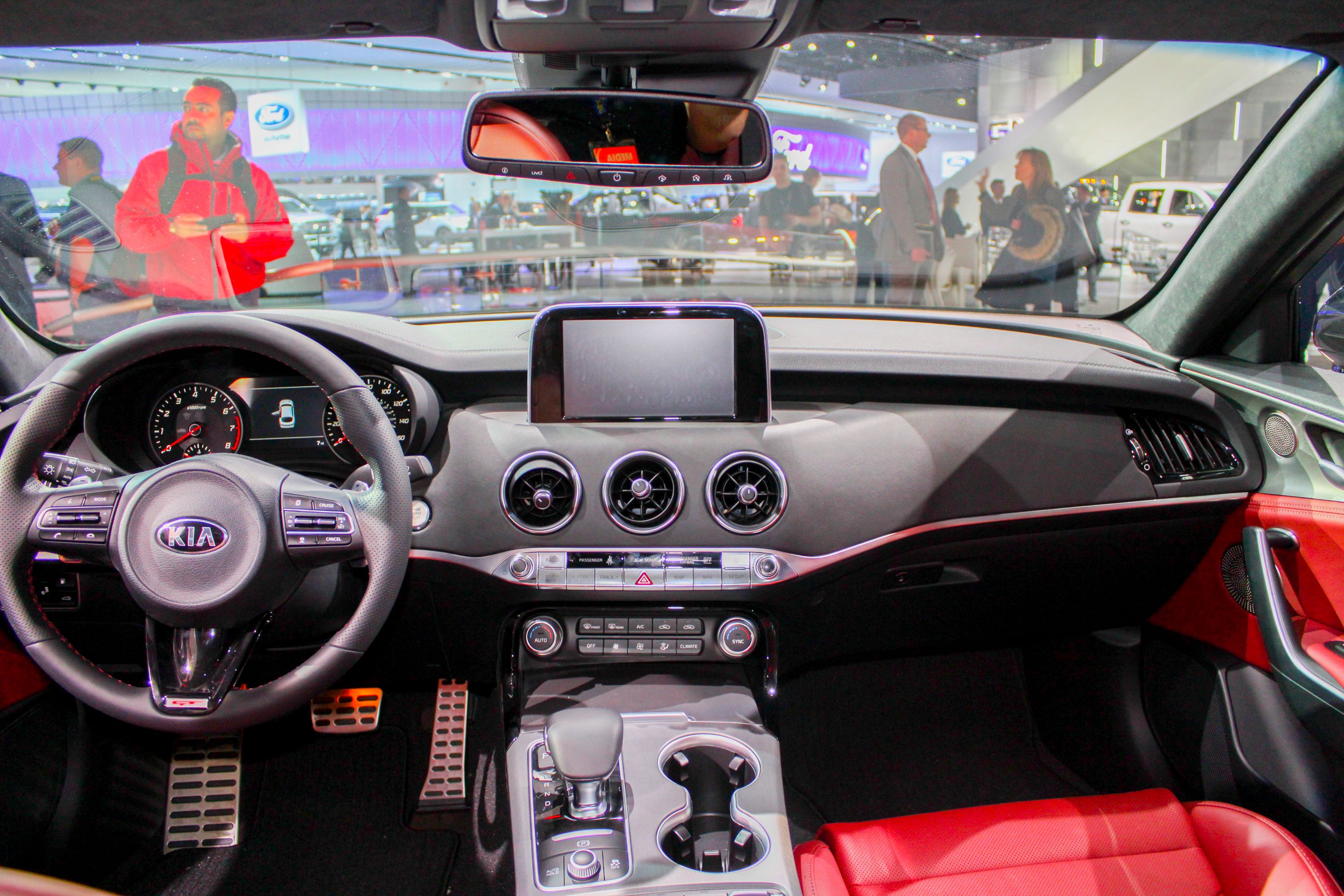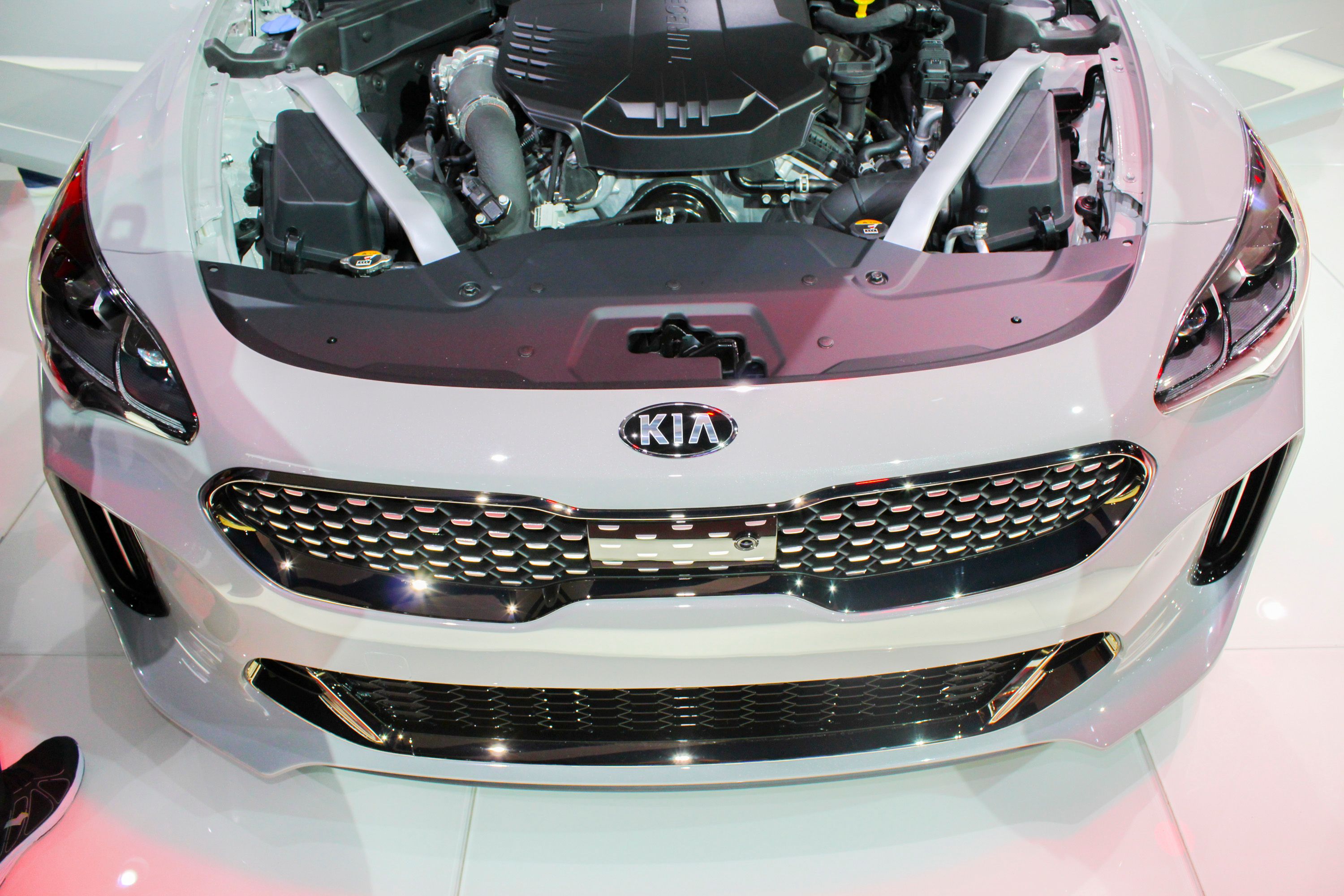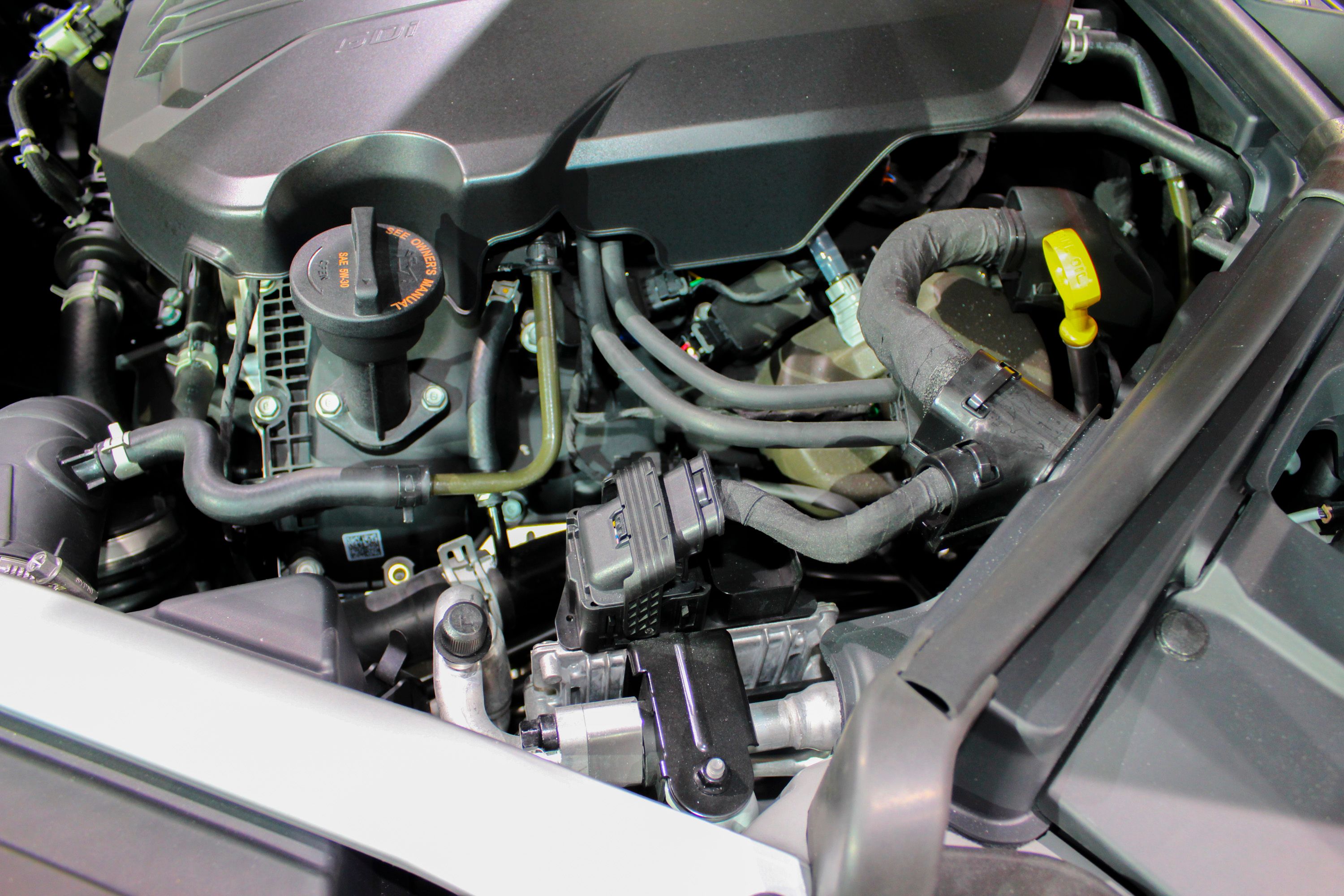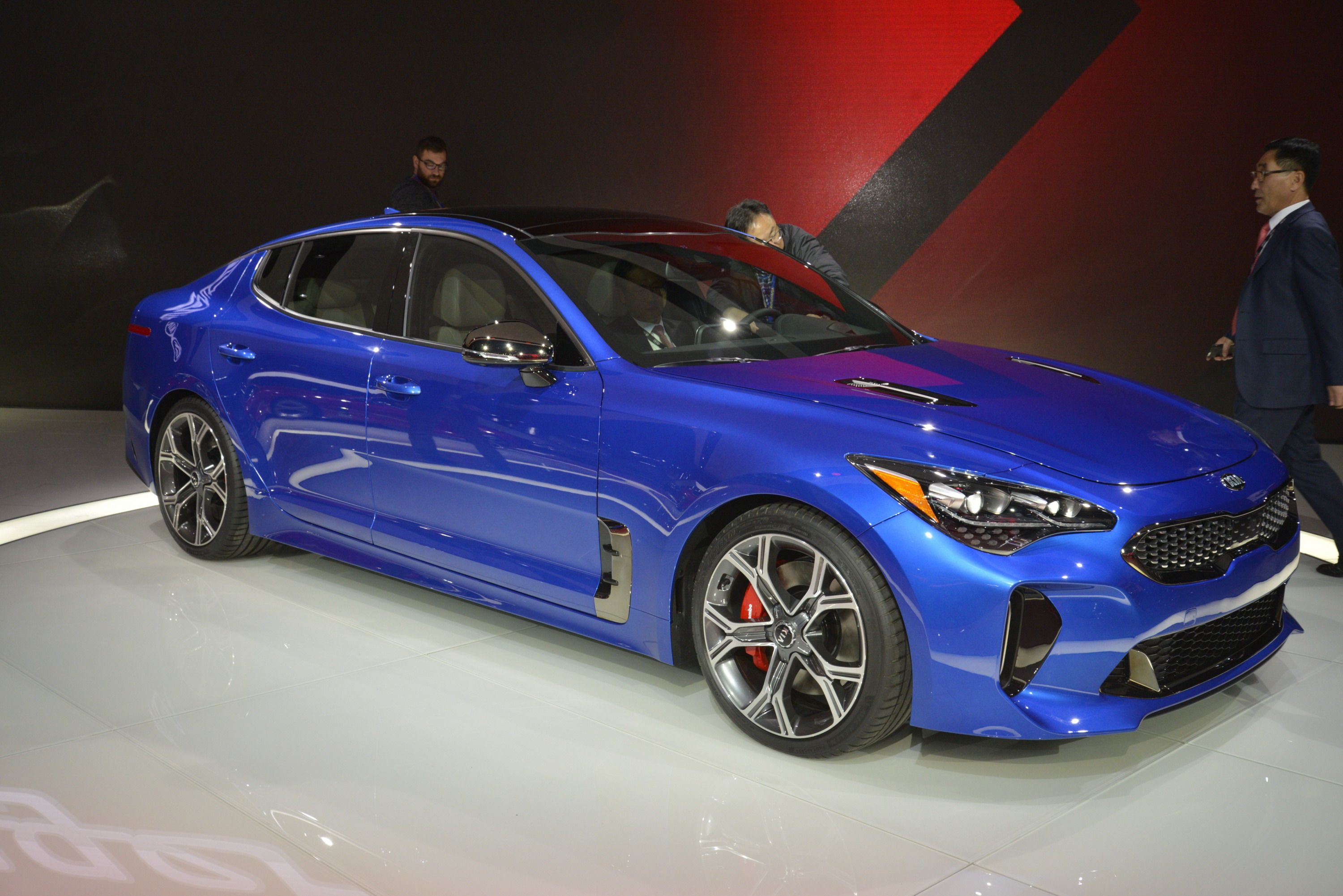I spent just over 24 hours at the 2017 Detroit Auto Show, and out of all the vehicles I had the pleasure of checking out, the Kia Stinger has stuck in my mind more than any. And, that’s saying a lot after spending some time with models like the Audi S5 Cabriolet, BMW 5 Series, and even the Mercedes GLA, among many others. I was actually quite skeptical when I first walked up to the three Kia Stinger models on display. I mean, after all, it’s a Kia, right? The brand came to the U.S. back in the early 1990s as an affordable brand that offered decent reliability but didn’t quite deliver in terms of performance, luxury, or even comfort in some cases. In recent years, the brand has stepped its game up a lot with models like Kia Optima, Niro, and Cadenza, but there was still a lot of room for improvement if the brand wanted to really step into the premium or luxury segments. Well, after seeing what the Stinger brings to the table, you can color me impressed and even encouraged about the South Korean brand’s future.
Now, the Stinger is set to bring some pretty healthy power into the mix with that 365-horse, 3.3-liter Biturbo and the 255-horsepower four-banger, but once I sat down inside of the new Stinger, it became immediately and exceedingly clear that it’s about a lot more than that. And, that’s saying a lot since I’m big on power output and performance. So what was it that impressed me so much? Well, there’s actually quite a bit, so keep reading to find out more about my experience.
The Definition of Beauty
When I first heard about the Stinger (at the time everyone was calling it the Kia GT,) I was afraid it was going to be a lazy reinterpretation of a car like the Kia Optima or Kia Cadenza. But, actually walking up to it and seeing it in person, I’m sad that I didn’t have more faith in the Kia brand. To put it simply, they went all out and then some. Every single thing about the new Stinger was strategically thought out and meticulously put into place. Kia took the Tiger Nose grille and evolved it into something more elegant, and the headlights fit so tightly within the body that it looks like they were molded directly into the body panels. The large air intakes in the corners are functional, as is a large majority of the air dam. But, what’s more important about the exterior design is the attention to detail and the exquisite fit and finish.
Like the headlights, the grille fits seamlessly into the front fascia, and the seams for the doors, rear hatch, and hood are all as tight as they can really get. You can hardly make out where the fascias meet the body, and there’s just the right amount of chrome trim in all of the right places. But, what really sold me on the Stinger is the fact that Kia didn’t try too hard on the exterior design – there isn’t too much aggressiveness, and that’s evident with the simplistic design of things like the rear fascia and the diffuser element that contrasts the rest of the car. What really hit home for me, came on the inside, so let’s move on to the interior.
Undeniable Quality and Comfort
Comfort, Luxury, and Space is the recipe that makes the Kia Stinger the future leader of its segment. I’m a big guy, so getting in the rear seat of any smaller sedan is… um…. a challenge to say the least. But, that wasn’t the case with the Kia Stinger. The rear doors open wide giving my large frame fairly easy access to the rear, and once I was inside, I found that I had an incredible amount of legroom. It’s not the kind of legroom that you would find in something like the Mercedes S-Class or the BMW 7 Series sedans, but for a car this size, it was more than sufficient. The rear seats are comfortable and angled just right with padding in just the right spots to relieve tension on the lower back and shoulder blades. The seat cushions offered ample support on the sides to help keep passengers in place during more spirited driving, while the slightly upswept front of the cushions positions your legs in an optimal position for blood flow and comfort. Needless to say, the rear seats were very thought out and designed to keep rear passengers happy. Rear seat passengers also get their own HVAC vents and controls to help keep things kosher, while the only hard-touch surface is the frame of the front seatbacks.
When I first sat down in the driver’s seat, my posterior mumbled: “thank you.” Okay, so maybe that was just bad gas from some lunch I had earlier in the day, but in all seriousness, the front seats seemed even more comfortable than those of the rear. The driver’s seat moved far back to accommodate those with a more protrusive gut or those with longer legs than I. At 5’10; I could barely reach the pedals with the seat in the rearmost position. But there’s so much more. First off, the view from the front of the cabin is something of dreams. The dash is sculpted and pleasing to look at, and the mixed design of the HVAC vents up front gives the front of the cabin a unique look. Those center vents, by the way, can be angled in any direction you wish. The instrument cluster is somewhat basic as far as visual design goes, but the digital display between the tach and speedo offers up a ton of information. The steering wheel is soft to the touch and has grip supports at ten and two, and the red contrast stitching is a nice visual touch.
Something else that I should point out is that a lot of people who have only seen images seem troubled by the “plastic” dash, but I can tell you that the presence of plastic is completely hidden in the design. Like the steering wheel and door trim panels; the dash has soft touch material as well – it’s a very nice thing to see from a brand like Kia. Something that the pictures don’t tell you, however, is that the driver’s seat sits very low inside the vehicle. As Albert Biermann, the head of Kia’s Vehicle Test and High-Performance Development group, told Motor1, “You feel a lot different, you really feel like you’re sitting in a sports car. The very low seating position, that’s the whole magic of the packaging,” he says. “If you go from this car to sitting in a competitor’s car, you feel like you’re sitting on a bench. Here you really sit deep into the car.”
And, for those of you who are wondering, I actually found myself at BMW just after I spent time with the Stinger, and he’s absolutely right – there is a night and day difference between the seating positions and, even as a larger person, I felt right at home in the driver’s seat of the Stinger. I like the way Kia went with the German look by integrating the infotainment display on top of the dash, however, I felt it could have been a bit larger – there’s quite a bit of room on either side that would allow for a wider screen. Be that as it may, the software that powers the display was intuitive and responsive with little lag. And, despite the low seating position it wasn’t obstructive to the driver’s forward view. The center console sits pretty high in comparison to some models, but there was ample leg- and hip room for both front passengers. All told, the cabin of the Stinger is very comfortable for all passengers, and its level of luxury is far beyond that of what I initially expected. I tip my hat to Kia in this department, and I look forward to seeing how the brand moves forward with other models in the future.
The Heart of the Beast
The model I spent some time with had the 3.3-liter Biturbo V-6. Official specs have yet to be released, but Kia says it’s shooting for 365 horsepower and 376 pound-feet of torque. Lower-end models with have a 2.0-liter with 255 ponies and 260 pound-feet, which will be decent for a car this size. The range-topping model that I sat it should hit 62 mph in around 5.1 seconds and a top speed in the vicinity of 167 mph – enough to give the BMW 3 Series and Mercedes C-Class a hard time on the track. But, it’s about more than that. The actual wheelbase of the Stinger comes in at 114.4 inches, which is longer than models like the Audi A4, Infiniti Q50, and even the BMW 4 Series Gran Coupe. But, what’s more important is the way the chassis itself was designed. Instead of focusing on light weight, Kia focused more on stiffness and strength. The base model tips the scale around 3,600 pounds while AWD versions with the 3.3-liter come in closer to 4,000 pounds. This means there is very little aluminum used and the Stinger should see little body and chassis flex in tight cornering.
While it hasn’t exactly been advertised yet, the Stinger does have the option to turn off stability and traction control. This means that drifting should be possible, thanks to this option and the mechanical LSD used in rear-wheel-drive models. But, you should know that there isn’t going to be any option for a manual transmission for some time to come, if ever. Biermann told Motor1 that engineers didn’t even try to design one and that “there is no demand” for such a transmission in this car. Perhaps that asked the wrong people, as I think this car would be absolutely amazing with a six-speed, but we all know that the manual transmission is on its last leg anyway, so it’s not all that surprising.
When I popped the hood to see what was really going on there, I was shocked at just how tightly the engine really fits inside the engine bay. Sure the dual air filters and turbocharger intakes take up a lot of room, but this isn’t a car you would enjoy doing an engine swap in, that’s for sure. I did notice that Kia has a support beam on each side that links the front strut towers to the core support up front – this should prevent any flex in the front end under hard acceleration. I tried to snap some images of each turbo as you can see here, but everything is so compact I couldn’t get a clear shot. To be honest, they aren’t that large, and there is a little bit of room for them to grow in the future, but it would be a difficult task.
One thing that I think is important to mention is that the Stinger, while teased as a track monster isn’t actually set up for the track. So if that’s your intention, you’ll need to plan on making a few upgrades. The chassis is well setup for such a thing, but you’ll definitely need to upgrading the engine’s cooling system and the brakes if you’re planning on tearing up the track on a regular basis. Bierman told Motor1 that it would be okay for “short stints,” but those upgrades would be needed for consistently intense driving. It does have an underbody tray (not pictured here) that helps in the aerodynamics department and, according to Biermann, the chassis can actually support “a lot more power.” He didn’t mention anything to the guys at Motor1 as to how much power, but the door is certainly open for more powerful iterations in the future. And, with that in mind, aftermarket tuning firms could come up with some pretty sweet upgrade packages for the Stinger in the coming years. I can’t wait to see what the future holds in that regard.
Motor10}
The Kia Stinger is one hell of a car, and I honestly can’t wait to see how this baby actually handles. It made me a little sad that I was able to sit in the driver’s seat but couldn’t take it for a spin, but it’s not even in production yet, and the engines are still technically in development, so it is what it is. But, as far as looks, comfort, and luxury go, Kia has really raised the bar, and I can’t in good conscience look down at the brand ever again if it continues on the path it has taken with the Stinger. Kia has put together the perfect recipe for performance and luxury in one sexy package, and you’ll see exactly why I sing such high praises of it when you get the chance to see it and take a seat in it yourself. If you still consider the Kia brand subpar to American and German brands, I suggest you change your mindset because the Stinger will impress you in just about every department. Well done, Kia. You’ve finally gone the distance and proven yourself worthy of being a premium automaker.

